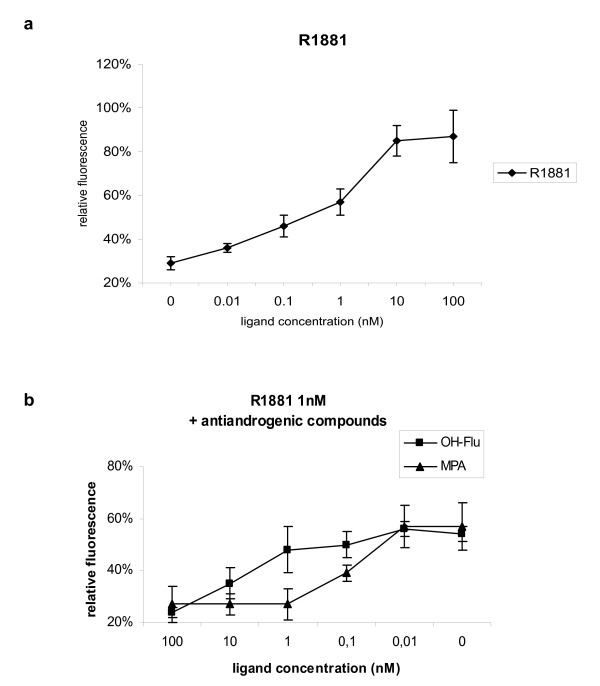Figure 3.
Dose response of AR-LBD and AR-NTD interactions to androgenic and anti-androgenic compounds. AR-LBD and AR-NTD interaction was analysed on cell arrays in the presence of different concentrations of agonist and antagonists. 3a: Dose-dependent induction of AR-LBD and AR-NTD interaction by the synthetic agonist R1881, showing a maximal response from 10 nM onwards. 3b: Dose-dependent inhibition of R1881 (10 nM) induced AR-LBD and AR-NTD interaction by two antagonists, medroxyprogesterone acetate (MPA) and hydroxyflutamide (OH-Flu). Quantitative analysis of this inhibition reflects the stronger antagonistic potency of MPA which can achieve maximum inhibition at a concentration of 1 nM as compared to OH-Flu, of which more than 10 nM is required to obtain the same level of inhibition. Data shown represents the mean fluorescence of 6 features per sample, collected from triplicate spots on two identical slides.

